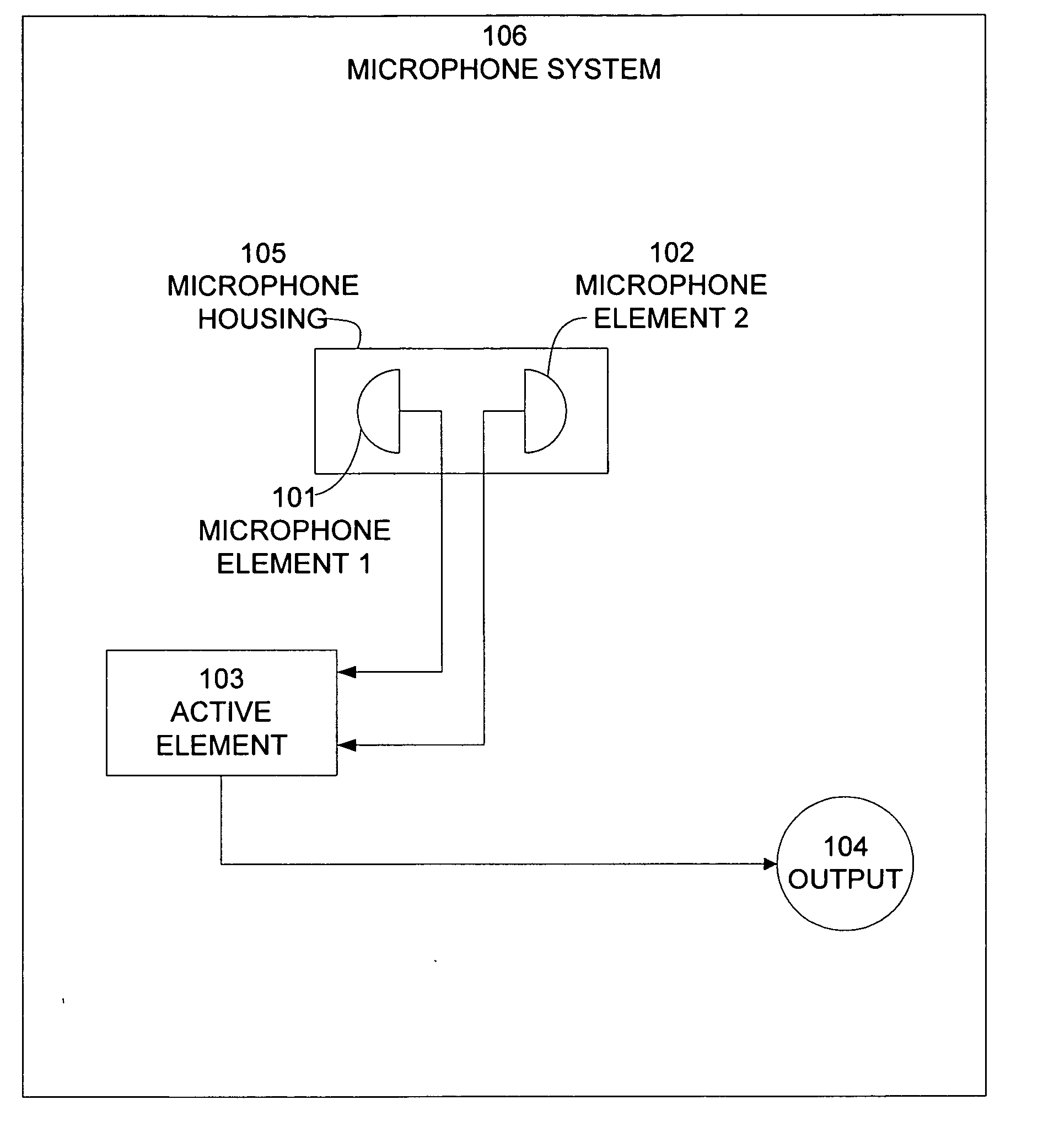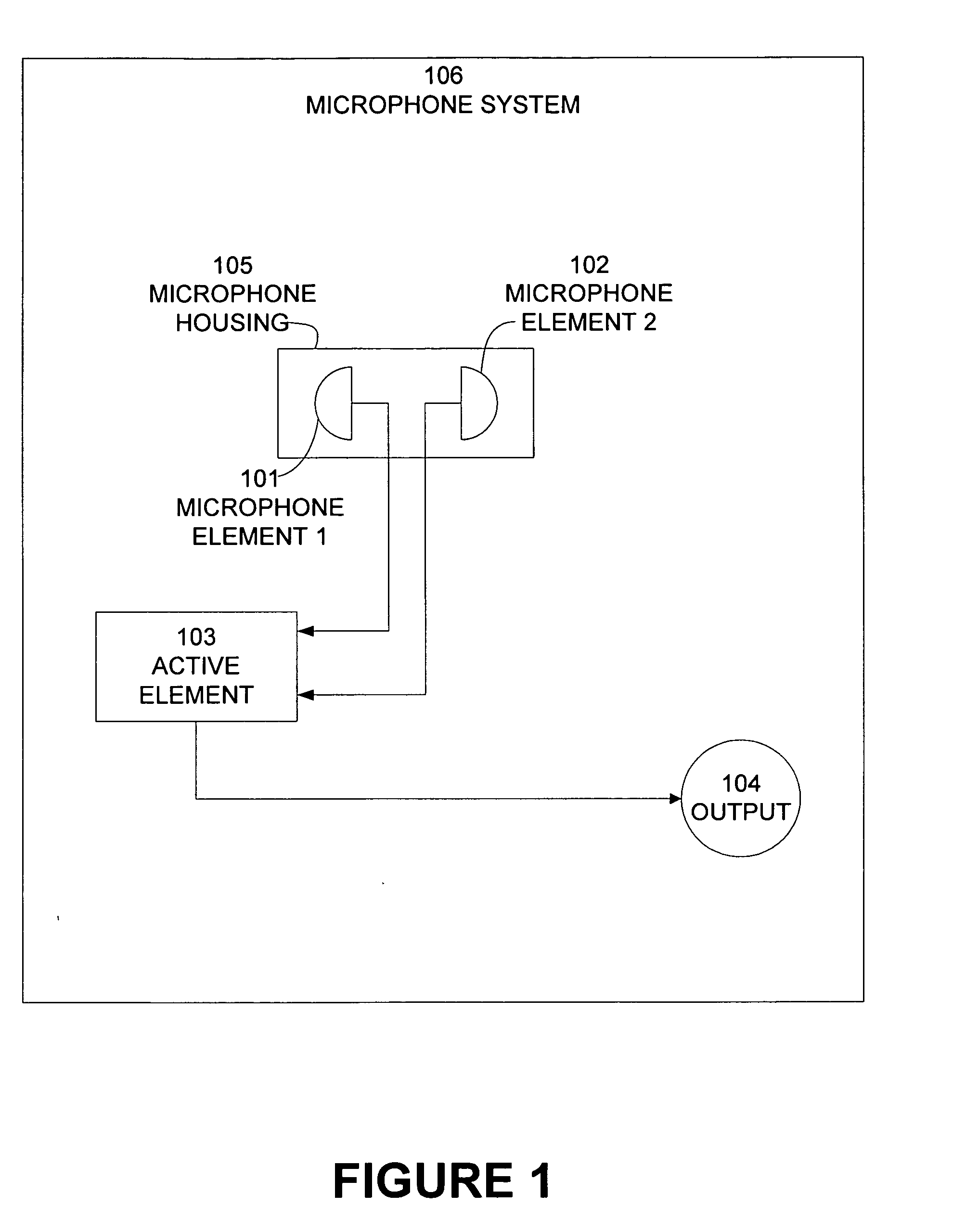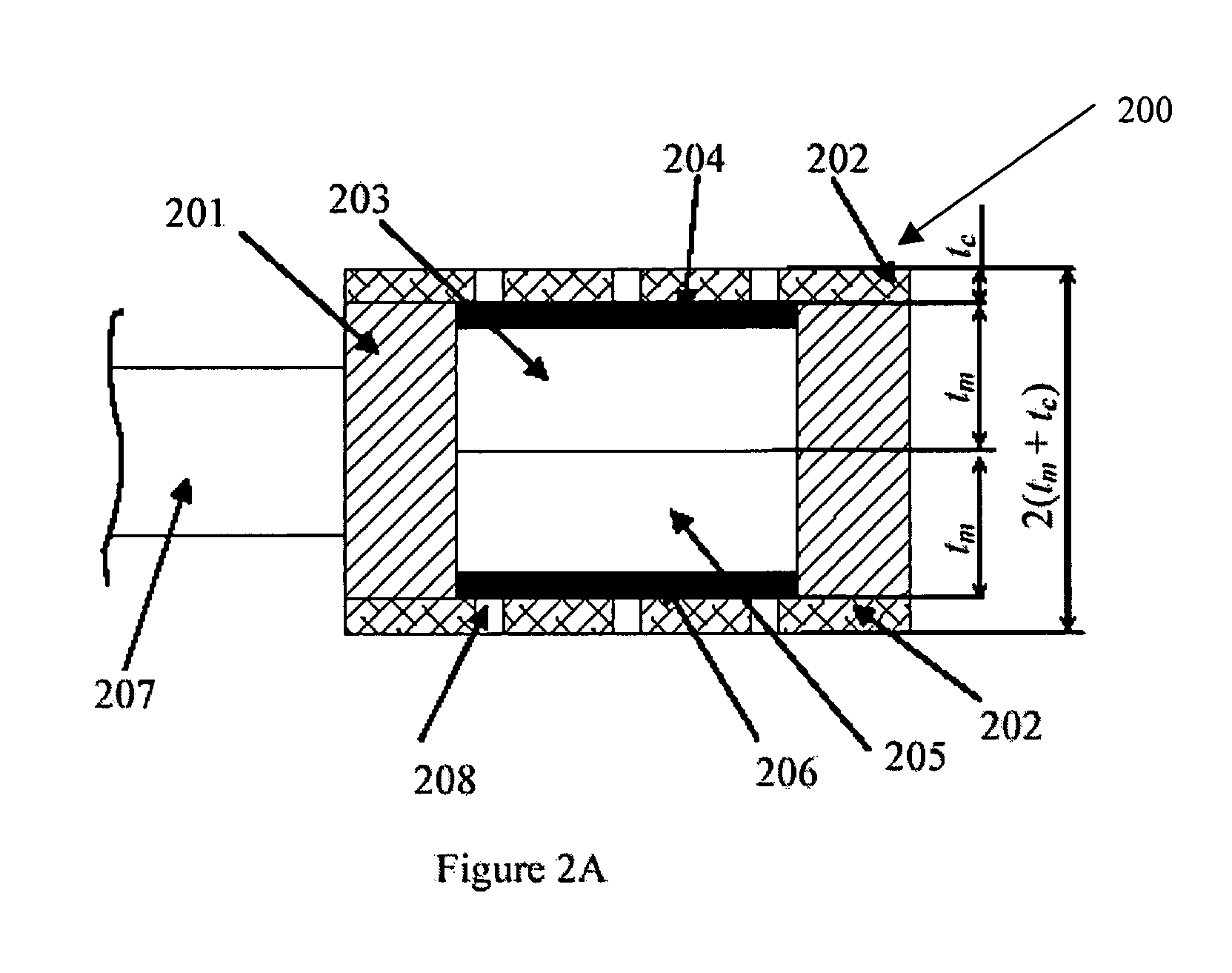Noise canceling microphone system and method for designing the same
a microphone and noise canceling technology, applied in the field can solve the problems of degrading the coherence between the two microphone elements, not necessarily working for affecting the performance of active noise canceling microphones, so as to improve the broadband noise canceling performance and improve the system speech transmission
- Summary
- Abstract
- Description
- Claims
- Application Information
AI Technical Summary
Benefits of technology
Problems solved by technology
Method used
Image
Examples
Embodiment Construction
A general block diagram of a noise canceling microphone system according to an embodiment of the present invention is illustrated in FIG. 1. A first microphone element 101 and a second microphone element 102 are enclosed in a microphone housing 105 designed according to embodiments of the present invention. The outputs of first microphone element 101 and second microphone element 102 are connected to an active element 103 having an output terminal 104. The two microphone elements are arranged such that the first element 101 receives the background ambient noise and the desired signal, or the speaker's voice, while the second element 102 receives substantially only the ambient noise. When active element 103 processes the signals from first and second microphone elements (101 and 102) the ambient noise (which as a result of the baffle design of the present invention is essentially equally sensed by the two microphone elements) is cancelled out significantly, leaving a substantial amou...
PUM
 Login to View More
Login to View More Abstract
Description
Claims
Application Information
 Login to View More
Login to View More - R&D
- Intellectual Property
- Life Sciences
- Materials
- Tech Scout
- Unparalleled Data Quality
- Higher Quality Content
- 60% Fewer Hallucinations
Browse by: Latest US Patents, China's latest patents, Technical Efficacy Thesaurus, Application Domain, Technology Topic, Popular Technical Reports.
© 2025 PatSnap. All rights reserved.Legal|Privacy policy|Modern Slavery Act Transparency Statement|Sitemap|About US| Contact US: help@patsnap.com



